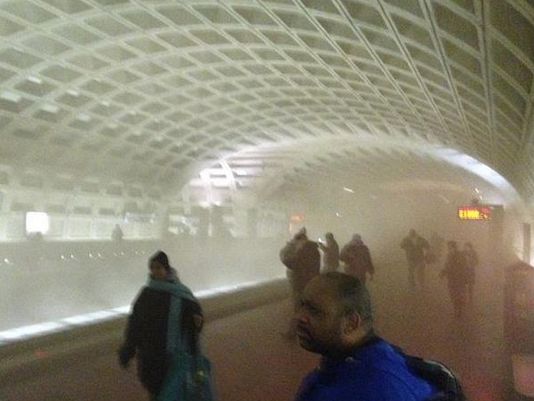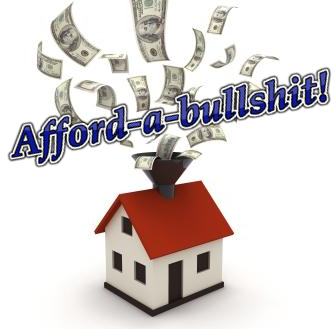Happy Holidaze from DC for Reasonable Development.
Exelon wants to nuke Santa, and bring DC more coal.
This is a reminder that at 5pm tomorrow, Wednesday night, your views, further opinions, and conclusions about the ridiculous Pepco-Exelon mega-merger should be on the public record, and the right side of history.
Please take a two-minute look at the following link, then edit and send your personalized note to the Public Service Commission (PSC) using this easy online form >> http://powerdc.org/take-action.html
Or email the PSC directly in re: Formal Case No. 1119 — Psc-commissionsecretary@dc.gov
TALKING POINTS BELOW
* Again, please send a note >>
http://powerdc.org/take-action.html
=================
GATHER IN PERSON TOMORROW
=================
Dozens of DC ratepayers will gather at the PSC offices, Suite 800, to SAY NO to the MERGER and file personal letters with the PSC opposing the Pepco-Exelon merger (Formal Case No. 1119).
MEET TOMORROW — 8:45 a.m., Wednesday, December 23rd at the DC Public Service Commission (the PSC), located at 1325 G Street, NW. Suite 800 — Public Service Commission (they say you should have your id to get upstairs)
Bring a letter written by you to the DC Public Service Commission opposing the merger; and, two or three letters from family, friends and neighbors, if possible.
~~ Say NO to the MERGER ~~
— WED. 12/23/15 — 8:45AM —
* Public Service Commission *
1325 G Street, NW. -Gather out front
————————-
suggested talking points
————————-
The backroom deal announced by Mayor Bowser and Exelon on October 6, is not in the public interest, undermines the year-long public process that resulted in the rejection of Exelon’s bid to take over Pepco and raises serious ethical and legal questions.
Tell the D.C. Public Service Commission (PSC) to deny the Bowser-Exelon-Pepco deal.
The Bowser-Exelon-Pepco deal:
* Is highly controversial and tainted with the appearance of impropriety (i)
* It represents a significant flip-flop by Mayor Bowser, who backed the PSC’s decision to reject the takeover.
* Just days before announcing the backroom deal with Exelon to revive its failed takeover of Pepco, Mayor Bowser struck a $25 million sponsorship deal with Pepco to pave the way for the future DC United soccer stadium.
Exelon and Pepco refused to disclose whether they had been asked to contribute to the Mayor’s, now disbanded, Super PAC
* Public Citizen and the Chesapeake Climate Action Network have called for a formal probe into the questions surrounding Mayor Muriel Bowser’s decision to reverse course and revive the $6.8 billion merger between Pepco Holdings and Chicago-based Exelon. (ii)
* The Washington Post reported that just prior to the settlement between D.C. Mayor Muriel Bowser and Exelon being announced, charities were told that philanthropic contributions ‘could be jeopardized if the deal is not approved. (iii)
* Undermines transparency and public process
* The deal was made behind closed doors and negotiations were led by the City Manager, who previously had no role in the takeover proceedings before the PSC.
* Key intervenors such as DC SUN and the U.S. General Services Administration (GSA) were excluded from the discussions and other intervenors such as the Apartment and Office Building Association (AOBA) and D.C. Water and Sewer Authority (WASA) were only brought in at the very last minute and strong armed into signing on by their Boards who have deep connections to the Mayor.
* Exelon has spent millions including full page adds, radio, TVs, paid petitioners, and door to door pressure tactics to try to bamboozle the public into supporting the deal. But the public isn’t buying it.
* The initial proposal was reviewed and deliberated over for nearly a year and included four public hearings and an ample public comment period that led the commission to declare that the proceedings generated more interest and more active participation by the public – which largely opposes the merger – than any other proceeding in the commission’s 100-plus years of operations. (iv)
* Exelon, supported by the Mayor, requested and was granted an expedited review of the deal that limits public participation and the opportunity for new challenges to the takeover.
* Exelon’s fact track motion coupled with the mayor’s backroom negotiations could shatter the public trust in the very processes established to protect energy consumers in the District.
* Is NOT supported by the public — Nearly 700 comments have already been submitted in opposition to the Bowser-Exelon-Pepco deal. 27 out of 42 Advisory Neighborhood Commissions (ANC) have passed resolutions in opposition to the takeover, no ANC has come out in support. The 27 ANC’s conservatively represent 300,000 District residents. Pepco claims it has generated 28,000 signatures in support of the deal by using its customers’ contact information to drive customers to an Exelon sponsored petition site. These 28,000 signatures represent 8% of Pepco’s D.C. customer base.
* If this deal is allowed to go through, it could harm D.C. electricity consumers
* The Mayor is claiming that the $78 million settlement will benefit ratepayers and ‘freeze’ electricity rates until 2019. This is grossly misleading: $25.6 million of the settlement will go straight back to Exelon to pay for the immediate rate increase they’ll put in place once they take over PEPCO. (v)
* Once March 2019 arrives, the Mayor’s deal allows Exelon to hit DC with several years’ worth of accumulated rate increases and allow Exelon to charge an additional 5% on those rate increases that exceeded the bill credits approved by the merger.– that means DC will have to pay interest on its electricity bills! (vi)
* Cynically, the rate hikes will be felt right after the next Mayoral election.
* Exelon gets to take back its much-touted $50-per-customer credit in 2019 as part of the new rate hikes – so we ultimately get nothing in our pockets. By contrast, Pepco shareholders will get nearly $2 billion windfall. (vii)
If approved, the deal would create the largest electric utility holding company in the country and give Exelon a monopoly in the mid-Atlantic region.
* This would allow Exelon to use its influence over its utilities to protect its generation interests at the expense of ratepayers and eliminate the independent voice of Pepco, which has taken positions that differ from – and in some cases served as a counterbalance to – Exelon in numerous forums including regulator matters, energy legislation and energy market proposals.
*The small changes in this settlement on board Governance and the siting of offices are smoke and mirrors designed to distract from the essential relationship which is unchanged stunt efforts to expand clean and local energy in the District
* Exelon has repeatedly demonstrated their disrespect for DC in their conduct of this proceeding and their back room arm twisting and divisive tactics are very well know in places like Chicago where they have long had a stranglehold on the state legislature
* Exelon views the advancement of renewable energy and energy efficiency as a ‘cannibalization’ of its core nuclear power generation.
This conflict between Exelon’s nuclear business and clean energy was a core reason why the PSC rejected the merger – the negotiated deal does NOT resolve this issue. (viii)
And it would lock the District into a regime far worse than Pepco (ix)
* Exelon is one of the leading opponents of renewable incentives at the federal level, as well as a foe of clean energy initiatives at the state regulatory and legislative level and in the wholesale market.
* Exelon uses not only aggressive political lobbying, but funds other groups to advocate for its interests and try to eliminate pro-clean energy policies that conflict with Exelon’s bottom line. For example, Exelon spends more funding the anti-clean energy Edison Electric Institute in one year than all the charitable giving it proposes for D.C. organizations.
* According to the American Customer Satisfaction Index released in spring 2015, Exelon has one of the worst customer satisfaction scores among energy companies coming in third to last among the investor-owned utilities in the survey.
FOOTNOTES:
(i) Infographic on the web of influence surrounding the Bowser-Pepco ‘Soccergate’ questions: http://www.citizen.org/documents/bowser-pepco-exelon-web-of-influence.pdf
(ii) http://www.citizen.org/documents/pepco-exelon-bowser-bega-investigation-request.pdf
(iii) https://www.washingtonpost.com/local/dc-politics/2015/09/17/1ceb5388-5d7d-11e5-b38e-06883aacba64_story.html
(iv) http://www.baltimoresun.com/business/bs-bz-exelon-pepco-merger-rejected-20150825-story.html
(v) http://www.powerdc.org/settlement-fact-sheet.html
(vi) id
(vii) id
(viii) https://www.citizen.org/SSLPage.aspx?pid=6637
(ix) id
=====================
Why must we do this?
=====================
After the PSC’s categorical rejection of the deal as ‘not in the public interest’ the Mayor directed DC government to enter into a non-unanimous settlement.
Pepco-Exelon unleashed an orgy of spending and backroom dealing (#Soccergate) on the public with the DC government, orchestrated by some of the same officials who ran the Mayor’s FreshPAC.
Pepco-Exelon spends daily to manufacture ‘support’ for the merger.At $15 per hour, petitioners, paid by Pepco, have filed 40,000 names with the PSC, many with no address; names that include Dick Balls, Harry Balls, SUckage Yeah, and F*ck Y#@.
That is why we are asking our allies — real DC residents, who pay Pepco rates, to join us in telling the PSC how much we don’t want to be sold to Exelon. Thanks.
==============================
~ Confusion + Corruption at all time High in DC ~
==============================
* Exelon Paid FreshPAC Chairman To Lobby D.C. Government About Merger with Pepco >> http://tinyurl.com/wamu-freshpac-exelon
—SOUND FAMILIAR—
* City officials paid Baltimore PR Firm, Fontaine & Co., to ‘Neutralize Public Opposition’ to McMillan Park Giveaway >> http://tinyurl.com/hn8rp6r
=================================================
Corporations VS. The People (with the help of some friends in the Govt)
GET INFORMED & TAKE ACTION NOW!
=================================================
* On the PEPCO-EXELON Merger, use this link >>
http://powerdc.org/take-action.html
* On SAVING MCMILLAN PARK, use this link >>
http://www.dcfeedback.com/fit2print/citywide/117






